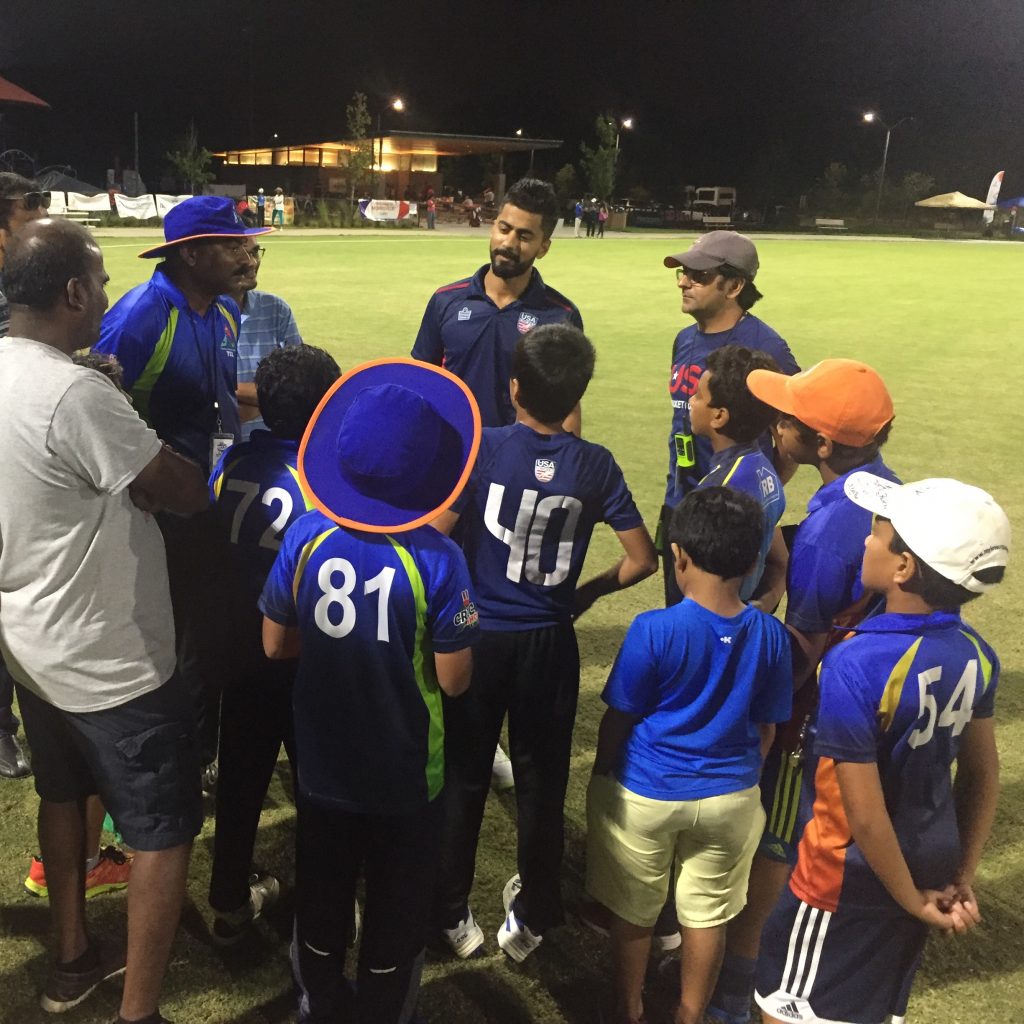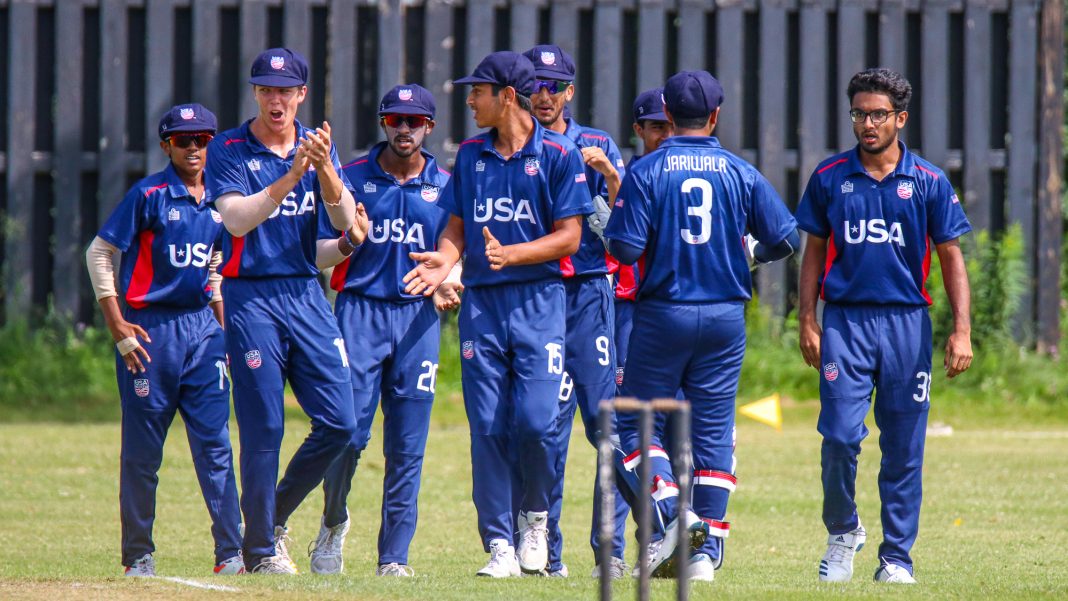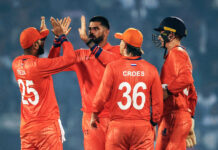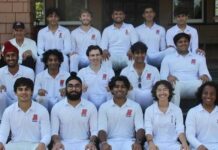Major League Cricket will launch with a focus on the existing cricket fan base, and any armchair marketing quarterback can (and probably will) tell you that this is a smart move. From there, the goal should be casting a wide net and reaching out into new communities. Creating new fans is in the best interest of any professional sports league, and certainly in the best interest of any national governing body. But how does one create new cricket fans? The answer, of course, is to get more kids playing cricket!
One of the benefits that come with launching a franchise league in the biggest sports market in the world is that you have the advantage of learning from the successes and failures of others. Professional baseball was built largely by opportunistic American cricketers, and surpassed cricket in popularity very early on, thanks in part to its pioneering of professionalisation. Already popular by then, baseball was even played by civil war soldiers in early summer evenings over a century and a half ago. Town ball and school yard ball followed, as Americans from all walks of life took to the ‘national pastime.’ Little League and municipal parks and recreational baseball dominated the later half of the 1900s.
Sadly, around the turn of this century, the ‘travel ball’ trend began to deplete participation and mainstream interest in baseball in the USA. Parents of means moved their children out of inexpensive community programs and into costly travel baseball systems, (foolishly) chasing scholarships and sports glory.
Yahoo Sports has produced a series titled Privilege of Play, which shines a light on the increasingly regressive model of American youth sports. In Why the world’s game is a white game in the USA, Henry Bushnell summarises soccer’s situation:
‘”Pay-to-play” clubs proliferated. The American system burgeoned around those who could afford it. It became an unchecked industry that exists less to develop players and more to make money for anybody who can get in on the scheme.’
Few statements could so perfectly summarize the present state of American youth team sports. Combine this reality with cricket’s pathological knack for excluding massive segments of population, and USA Cricket clearly faces a steep climb.
Youth cricket programs in the United States are often secondary products of programs originally built by, and for, adult expats eager to continue the pastimes of their home of origin. Clubs grow into leagues and large organisations, with bylaws often less than ideal for accommodating future youth programs which organically develop over time. In some cases, youth fees actually help supplement adult fees, a practice reinforced by adult league members having a larger vote. Organisations often over-present their youth contingent to local government in order to gain cheap access to public fields, and then utilise them mostly for adults. Parents regularly go to extraordinary financial lengths for their children to be on a team, while adults play in their local league for a few hundred dollars.
The cricket equivalent of ‘travel ball’ developed quickly, and various ‘national’ competitions sprouted up across the country. This has required families to spend thousands more, and consume much of their personal leave. Parents, eager to get their children in front of the right people, spend thousands again to ensure their children attend the right academy, and the right elite clinics, with no real assurance that they’re following the right path. And this is if their children play cricket at all.
Spend a summer Saturday at your local cricket ground watching a men’s league game and you’ll find a half dozen children watching their fathers play. Ask the fathers why their children don’t play cricket, and you’ll likely hear a familiar explanation: ‘youth cricket is too political,’ or ‘it’s too expensive’.
This is not to say that all youth cricket in the USA is rotten. Genuine efforts to develop equitable, meritocratic, and generally fair and accessible cricket exist in spades, but are often usurped by opportunists with less noble motives. Ultimately, youth cricket in this country would simply not exist if not for this mixed bag of well intentioned cricket lovers and volunteers, upper middle class expat families, and the aspiring emperors, seeking to exploit their collective progress and their dreams.

What if our youth didn’t have to choose between carpetbaggers and the guaranteed uncertainty of cutting their own path? What if a family didn’t have to be upper middle class to afford all the perks required to level the playing field for their children, or to simply play on a cricket team in the United States? How can USA Cricket regulate leagues to ensure the good of the game remains as the guiding star? These are questions USA Cricket must wrestle with while mapping out its plan to maximise the potential of cricket in the United States.
Recently, American Cricket Enterprises announced plans to expand their Minor League Cricket network, introducing a Youth Minor League and a Youth Major League system to run alongside Minor and Major League Cricket. The system will flesh out with five age levels of youth, from U-11 up, and include age-group regional championships. While the Youth Minor and Major League will bring more elite competition, turf grounds, and high-end coaching into the picture, USA Cricket solely owns the official domestic cricket pathway. One critically important aspect of that pathway is going to be entry level cricket.
The Entry Level Program (ELP) for youth
Announcing progress on a new entry level youth program exclusively to Emerging Cricket, USA Cricket CEO, Iain Higgins, said ‘The design and delivery of a fun and engaging entry level program (ELP) for girls and boys is absolutely critical to our vision of establishing cricket as a leading sport in the USA. We are delighted to partner with Alacria in the development of this program. They have a proven track record both in cricket as well as in the introduction of new sports into non-traditional markets, and have leveraged US research and local community expertise to ensure that this ELP will be effective in driving participation in the USA market.’
Alacria brings decades of combined experience working particularly in the development of sports participation programs. The leadership team at Alacria have worked with Cricket Australia, BCCI, ECB, South African Cricket, New Zealand Cricket, Cricket Ireland, and that’s just the cricket section of their CV!
Working directly with Alacria on this significant project is USA Cricket Development Manager, Jamie Lloyd. ‘Cricket at a youth and junior level is very much run by private organisations, particularly in the academy space, and they’ve done a superb job of keeping youth cricket and junior cricket basically alive in this country over a period of decades when there hasn’t been a cohesive junior or youth program coming from the national governing body. So they’re a very important part of whatever is going be happening in the junior and youth space moving forward,’ Lloyd told Emerging Cricket.
‘But we need to provide low cost, low barrier to entry cricket opportunities for boys and girls, and this program is obviously a huge part of that. As the saying goes, a rising tide floats all boats, so I hope that academies and leagues and other cricket organisations throughout the country see the value in a low cost, entry level program, because it’s only going to create benefits for those organisations moving forward,’ he continued.

Alacria Director, Luke Bould, brings extensive experience with soccer, having spent six years with the Football Federation Australia (FFA) National Governing Body, spending time on the Asian Football Confederation (AFC) marketing commercial commission, focusing particularly on the marketing of participation programs across Asia. Bould also serves as a Director at Davinci Payment Systems and the FIBA Women’s Basketball World Cup 2022.
‘The fundamental foundation of our approach, and this is absolutely USA Cricket’s approach, is that this is about doing a sport for all,’ Bould emphasized. ‘I mean it’s the biggest sport in India, and clearly India has a massive middle class, but it has a massive issue with poverty, yet it’s the game of the people…Australia, like the US, is a country of immigration of many, many cultures, yet cricket is a unifying force in that regard. So, it’s with that background of the experience of cricket around the world, along with that dedication to the concept of sport for all, that we come to what we want to achieve for USA Cricket,’ Bould tells Emerging Cricket.
‘We’re also really cognisant of the realities of US sport. Declining participation in youth sport, even in sports like soccer, which has been one of the shining lights in terms of participation for many years in the US, is a challenge. This concept that unless you’re going to get a college scholarship or make the pros, you don’t continue with sport, that is a real problem. And it has led to so many problems beyond sport, in terms of obesity and a whole range of other issues.’
‘We’ve spent a lot of time talking to Tom Farrey at the Aspen Institute, who are doing a lot of work and really leading the way in many respects around this issue and finding solutions. Our interest in this area, our work to have a really deep understanding of the challenges of the US sporting environment, predates our appointment to US cricket and our relationships with people in that space predates our relationship with US Cricket,’ Bould continues.
Bould cited two advisors in their team with extensive experience in American sports participation. ‘One of them in particular was very senior within college sports, the other has been involved in soccer across the US for 30 plus years, a very significant role at US Soccer for many years, and so has really significant knowledge of the US sports industry. And over and above those two people who we’re working with, we have an advisory group, which is slightly broader, which is again all US based, with an enormous amount of experience in participation.’
Kids coming back is the measure of success
Barriers such as cost and geography are a big enough challenge, but rushing young kids into eleven-a-side cricket risks chasing new families away. In the late 1990s, The Royal Belgium Football Association famously implemented Michel Sablon’s youth development plan after their World Cup failures led them to conclude there was ‘no unified vision on youth.’ The result was federation coaches agreeing on Sablon’s plan focusing on the development of individual skill, starting at the youngest level with small sided games.
Part of Sablon’s theory was that in a nation of only eleven million people, if they were to compete on the world stage, they’d need to give youth every chance to develop to their fullest potential. In large sided games, the dominant players get all the chances, while the struggling players get limited opportunities to develop their skills in-game. This not only limits their development, but it limits their fun, which often ends their journey in the sport with frustration.
‘Modified games are really critical. We’re talking about kids, they’ve got shorter attention spans, particularly at the lower end of the age group. They struggle to hold the bat,’ Bould said on the topic.
‘I’ve got to stress here that our remit at the moment, the work we’re doing at the moment, is solely on the ELP. We’re doing that with a view to the transition, because you can’t ignore the transition to club or school or team based cricket, but…the conversations we’ve had with Jamie, it’s absolutely the acceptance that there has to be small sided games and small sided cricket and modified games to make sure the kids are getting a fun experience that’s going to bring them back…as distinct from the experience of rushing them into eleven aside, eight hour cricket, and having half of them, if not ¾ of them fall away because they’re standing in the outfield for half the game and they’re not having a good experience.’
‘The fundamental approach is that we’re not trying to find the next Murali or the next Tendulkar or the next Shane Warne,’ Bould continues. ‘What we’re trying to do is build affinity to the game amongst as many kids as possible, and build that affinity over their life, and we’re only going to do that by them having a great experience…Modified games, small sided cricket, indoor cricket, all of those are tools to ensure that we achieve that core objective.’

‘There are pieces of work going on in the background about that next stage,’ adds Jamie Lloyd. ‘Luke’s absolutely right, this entry level program is a really, really important piece of work, and arguably the most important piece of work that we’ll do in 2021 as a national governing body.’
‘But, you can’t ignore those other next steps in the pathway. So if we’re getting tens of thousands, or hopefully hundreds of thousands of kids having this awesome social experience of what cricket could be, where do they go to next? And they can’t be going from this to hard ball, eleven aside, eight hour cricket. There’s got to be modified formats for them, and that might be eight overs aside, you bat for four overs regardless of how many times you get out. Modified equipment, larger balls, larger bats, more wickets to aim at. All of that is up for debate and is part of a broader discussion, but absolutely those things are key to our philosophy.’
According to Lloyd, ‘we try to emphasise as much as possible that everything is on the table. There are very few sacred cows. As long as the kids associate whatever is happening with cricket, and they’re having a fun and social experience, so they leave saying “I had fun playing cricket today,” even if it doesn’t necessarily resemble all that closely traditional cricket, then it’s been successful. In my opinion, the measure of success will be if the kids want to come back.’
Considering Michel Sablon’s program, and judging by the current standing of Belgium on the world football stage, one could argue that even if USA Cricket were trying to create the next Murali or Warne, this would also be a good way to do it. Bould and Lloyd agree.
‘We’ve just got to get kids enamoured with the game,’ Bould adds, ‘and get parents enamoured with the game because they’re having a great social experience as well, and they’re seeing their kids develop some basic skills. If we do that they’ll want to keep coming back, and if they keep coming back they’ll get better, and lo and behold, in a few years time we may have the next Murali. At the very least what we’ll have is a really growing and vibrant base of participants and future fans for the game.’
Finding grounds and keeping volunteers enthused
To any American cricket enthusiasts reading this wondering ‘what can I do right now to help youth cricket in this country?’ You can contact USA Cricket and they’ll put you in touch with your zonal youth coordinator. You can join a local organisation as a volunteer and help promote the idea of entry level cricket from within. If you don’t have a local cricket organisation, talk to your local parks and recreation department. Many parks and recreation departments are eager to try new programs, and will often pay you hourly for your time. Public parks would typically rather retain ownership of a program than rent fields to private organisations. Since the city owns the fields, they can make it less expensive for the youth than private leagues will, and they exist for the public after all.

No matter what program is developed at the national level, the fate of cricket in this country will always come down to volunteers at the local level. Many reading this have already contributed to cricket’s future in the USA, and will continue to do so. Every contribution to spread the game counts, but these volunteers know that it is seldom easy.
Alacria and USA Cricket are aware of the many challenges volunteers face, says Bould. ‘One of the barriers to participation in sport is the poor experience the parent volunteers have in just getting the sport played. We’ve heard this across multiple sports, you know, there’s poor back end support, there’s poor systems for booking community spaces, all of those sorts of things.’
Jamie Lloyd sees the public sector as a part of the solution later on, once the sport has built more demand. ‘It’s a massive challenge, and I think USA Cricket have identified access to facilities as a major barrier to cricket at all levels. At the top end it’s about the lack of quality turf wickets. And…at the lower junior end, it’s the inability of leagues or existing men’s competitions to want to give up time slots to youth or junior teams, because there is a dearth of facilities.’
‘It’s come up enough recently as we’ve been having discussions about entry level programs in junior cricket that it’s something we’ll have to talk about at some depth at some point. I suspect it’s also a little bit of a chicken and egg thing. I think perhaps because there isn’t the groundswell of juniors and youth around the country begging to have access to facilities to play, it’s a problem that can quite easily get pushed to the side. But once we do this entry level program correctly, there will be that groundswell of kids and parents who have had this awesome experience with cricket who will want to have access to facilities to run an after school program, or run a local under eights cricket league, or whatever it is. That will force local municipalities or local leagues to start to come up with solutions to this problem.’
As those who love it know, cricket is as much a lifestyle as it is a sport. We watch it at strange hours, and play it for years past our physical prime. It’s tough to find a cricket fan without passion for the game, and there’s always something to learn. The idea of cricket entering the consciousness of the American public has long excited many. But the reality of what it would take to make it happen has eluded most.
If cricket does catch on in this country, Luke Bould thinks it has a lot to give. ‘We clearly have a job to do in terms of introducing the game to more American boys and girls and building their affinity for the game, but our other job here is to create healthy outcomes and healthy lifestyles. And we think cricket is a great game for doing that. It’s a game you can play at just about any age, probably not fast bowling at 60 year old, but it is a game that you can start at the age of two or three, pick up a bat and ball, go for a run, hit balls around the playground, and have for life. We really want to create that. We are working on ways to make sure this game is accessible, to make sure family and kids aren’t priced out of it, and that is absolutely part of the brief for what we’re working on.’
You’re reading Emerging Cricket — brought to you by a passionate group of volunteers with a vision for cricket to be a truly global sport, and a mission to inspire passion to grow the game.
Be sure to check out our homepage for all the latest news, please subscribe for regular updates, and follow EC on Twitter, Facebook, LinkedIn and YouTube.
Don’t know where to start? Check out our features list, country profiles, and subscribe to our podcast.
Support us from US$2 a month — and get exclusive benefits, by becoming an EC Patron.







